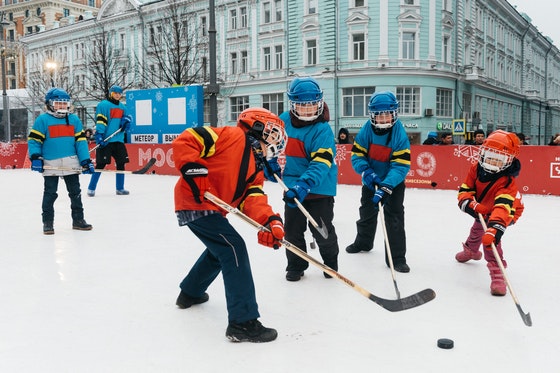
When your child seems ready to take on the adventure of hockey, it can be incredibly exciting. But, even if you currently play or played hockey when you were a child, so much has changed in the world of youth hockey that you might not know where you can even start.
We have broken down the basics of getting your child into hockey for you.
When to Start
The first question is: is your child ready to play hockey? The youngest age that a child typically will begin to play on a time is the age of five. Sometimes it might be four, but five is a general rule of thumb. Their balance will be good enough to learn to skate and play competitively.
If you have a younger child, that is ok too. You can still introduce your child to skating and the sport itself. Many rinks will have toddler lessons or just open skate to introduce the concept.
If your child is older than five, that is ok too. You are never too old to take up the sport of hockey.
Equipment
Before we delve into finding a team and tryouts, let’s take a look at what kind of gear you can expect to purchase. It is important to note that some gear is essential, while other gear is not.
- Helmet: In hockey, your hockey helmet can be the difference between a simple bump on the head and a serious injury. A helmet must fit snugly and well. You also should never buy a used helmet as they can suffer internal damage if they have experienced an impact before.
- Skates: Your child will also need a good pair of hockey skates. Like a helmet, you should avoid buying these used as they will not fit properly. They should have a finger’s amount of room in the back, but otherwise need to fit snugly.
- Stick: Your child’s stick will need to have a length based on his/her height, and a flex rating appropriate for his/her age. The younger players should start with a flex rating of 20. Older children should start with a flex rating of 30.
- Gloves: Gloves will not only keep your child’s hands warm, but it will protect them as well. The key with these is that the gloves still need to allow a child to hold a stick without trouble, so nothing too bulky.
- Pads: This is where equipment starts to vary. There are a lot of pads that you can get, including shoulder pads, elbow pads, shin pads, and even a neck guard. Ask your child’s coach about what pads you really need to get.
- Mouthguard: Sometimes mouth guards are required by leagues, other times not. If your child can get used to wearing a mouth guard early, however, you can save yourself the headache of mouth injuries later.
- Hockey bag: This is not necessary, but sure is handy. If you can keep all of your child’s gear together, you will not have to frantically look for whatever piece of gear might be missing before a game or practice. They are optional, but definitely good to have.
Finding a Team
When it comes to finding a team for your child, there are a couple of places to go. If you are in Canada, you should check with First Shift, which is a program that is there to help families who are just getting started in hockey. Otherwise, you can talk to your local hockey rink or community center to see what kind of guidance they can supply as well.
In the US, you can contact USA Hockey to help get additional guidance, beyond contacting your local rink. You will want to get your child on a team that is with children of the same age. Ability is less important for younger players since everyone is just getting started and they will learn quickly.
Hockey is the kind of sport that you can play for life. The health benefits, team-building skills, and the motor skills that develop will benefit your child throughout his/her life. If you are interested, get your child into the joyful world of hockey as soon as possible.
Related topics
Most recent
-
Loading ...